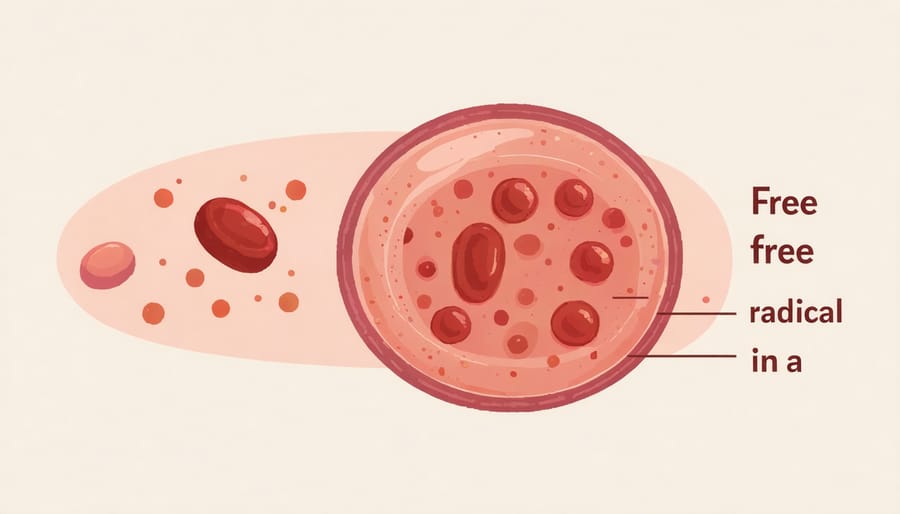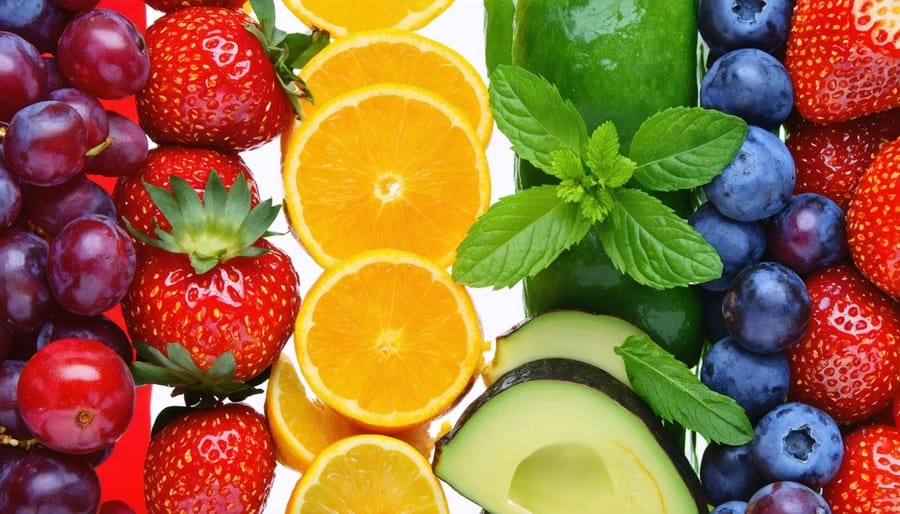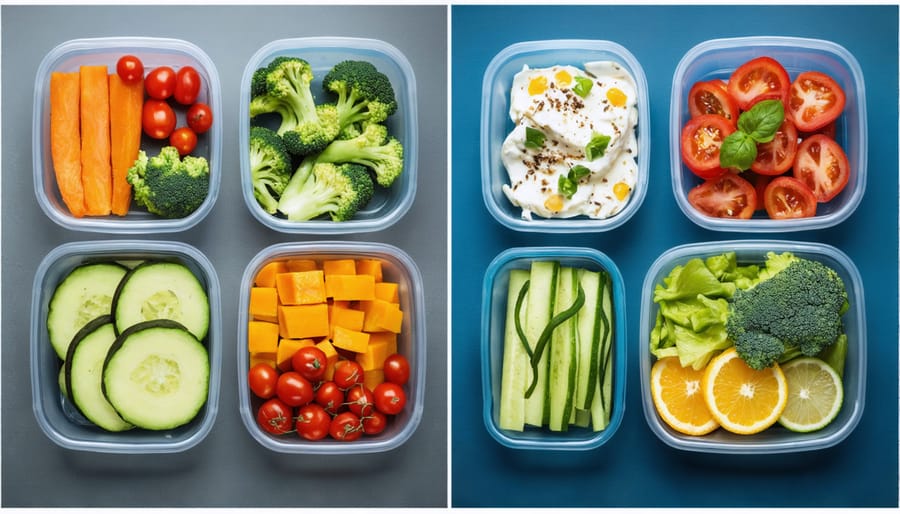The profound connection between nutrition and disease prevention represents one of modern medicine’s most powerful insights. Every bite we take either strengthens or weakens our body’s natural defense systems, directly influencing our risk for chronic diseases like heart disease, diabetes, and certain cancers.
Research consistently shows that a nutrient-rich diet serves as our first line of defense against illness, working at the cellular level to reduce inflammation, support immune function, and maintain vital bodily systems. The antioxidants found in colorful fruits and vegetables actively combat free radicals that can damage cells, while fiber-rich whole grains help regulate blood sugar and support digestive health. Essential fatty acids, vitamins, and minerals work together to maintain the body’s complex defense mechanisms.
But perhaps most remarkably, proper nutrition doesn’t just prevent disease—it actively promotes health. Studies reveal that dietary choices can influence gene expression, enhance mental clarity, and even slow the aging process. This dynamic relationship between food and health empowers us to take control of our wellbeing through informed, intentional eating habits, making nutrition one of the most effective tools we have for building a healthier future.
The Science Behind Food as Prevention
Understanding Inflammation and Nutrition
Inflammation is your body’s natural defense mechanism, but when it becomes chronic, it can contribute to various health conditions, including heart disease, diabetes, and certain cancers. The good news is that your food choices can significantly impact inflammation levels in your body.
Certain foods have natural anti-inflammatory properties that help protect against disease. For example, colourful fruits and vegetables contain antioxidants that combat harmful free radicals and reduce inflammation. Omega-3 fatty acids, found in fatty fish like salmon and mackerel, also help suppress inflammatory responses.
Conversely, some foods can promote inflammation. Processed foods, refined sugars, and excessive red meat consumption may trigger inflammatory responses in the body. Trans fats and high-fructose corn syrup are particularly problematic and should be limited in your diet.
To reduce inflammation through nutrition, focus on building meals around whole, unprocessed foods. Include plenty of leafy greens, berries, nuts, seeds, and fatty fish. Adding anti-inflammatory spices like turmeric and ginger can provide additional benefits. Remember that small dietary changes can lead to significant improvements in your body’s inflammatory response over time.
Antioxidants: Your Body’s Natural Defense
Antioxidants are your body’s natural defense system against harmful molecules called free radicals, which can damage cells and contribute to various diseases. Think of antioxidants as your cellular bodyguards, constantly working to protect your health at the microscopic level.
These powerful compounds are abundant in colourful fruits and vegetables, particularly berries, leafy greens, and orange produce. They’re also found in nuts, seeds, and even dark chocolate. Each colour represents different types of antioxidants, which is why eating a rainbow of foods is so beneficial for your health.
When you consume antioxidant-rich foods, you’re helping your body fight against oxidative stress, a process that can lead to premature aging and chronic diseases. Common antioxidants include vitamins C and E, beta-carotene, and selenium, each playing a unique role in protecting your cells.
To boost your antioxidant intake, try adding a handful of berries to your breakfast, snacking on nuts, or including dark leafy greens in your daily meals. Remember, fresh, whole foods typically provide the most potent antioxidant benefits.


Key Nutrients That Fight Disease
Essential Vitamins and Minerals
A well-balanced diet rich in essential vitamins and minerals plays a crucial role in protecting against various diseases. Vitamin C strengthens your immune system and acts as an antioxidant, while vitamin D supports bone health and helps prevent several chronic conditions. B vitamins are vital for energy production and maintaining healthy nerve function, with B12 being particularly important for preventing anemia and supporting cognitive health.
Minerals like calcium and magnesium work together to maintain strong bones and support heart health. Iron is essential for oxygen transport throughout your body, while zinc helps wound healing and immune function. Selenium acts as a powerful antioxidant, protecting cells from damage that could lead to chronic diseases.
To ensure you’re getting these nutrients, focus on eating a rainbow of fruits and vegetables, whole grains, lean proteins, and dairy or fortified alternatives. Dark leafy greens provide iron and calcium, while nuts and seeds are excellent sources of minerals like zinc and magnesium. Citrus fruits offer vitamin C, and fatty fish provides vitamin D along with heart-healthy omega-3s.
While supplements can help fill nutritional gaps, getting these nutrients from whole foods is ideal, as they work together synergistically to provide maximum health benefits.
Power of Plant Compounds
Plant compounds, also known as phytonutrients, are nature’s powerful disease-fighting tools found abundantly in fruits, vegetables, whole grains, and legumes. These natural substances give plants their vibrant colours, distinct aromas, and protective properties – benefits that extend to human health when we consume them.
Different coloured foods contain unique plant compounds that offer specific health advantages. For instance, the lycopene in red tomatoes and watermelon helps protect against certain cancers and supports heart health. Dark leafy greens contain lutein and zeaxanthin, which promote eye health and reduce the risk of age-related vision problems.
The anthocyanins found in berries and purple vegetables have been shown to improve memory and cognitive function while offering anti-inflammatory benefits. Orange and yellow produce, rich in beta-carotene, supports immune function and skin health. Cruciferous vegetables like broccoli and cauliflower contain glucosinolates, which help defend against various types of cancer.
To maximize these benefits, aim to eat a rainbow of plant foods daily. Include at least one serving from each colour group – red, orange/yellow, green, blue/purple, and white/brown. Remember that these compounds work best together, so variety is key. Fresh, frozen, or even lightly cooked vegetables and fruits retain their beneficial plant compounds, making it easy to incorporate them into your daily meals.
Disease-Fighting Food Choices
Heart Health Heroes
Your heart will thank you for including these powerful foods in your daily diet. Dark leafy greens like spinach and kale are rich in potassium and nitrates, which help regulate blood pressure and improve blood vessel function. Fatty fish such as salmon, mackerel, and sardines provide essential omega-3 fatty acids that reduce inflammation and help prevent heart disease.
Berries deserve special attention for their high antioxidant content, particularly blueberries and strawberries, which help protect your blood vessels and reduce the risk of heart attacks. Nuts and seeds, especially walnuts, almonds, and flaxseeds, offer heart-healthy fats and fiber that can help lower cholesterol levels.
Whole grains like oats, quinoa, and brown rice provide soluble fiber that helps remove excess cholesterol from your bloodstream. Adding legumes such as beans, lentils, and chickpeas to your meals provides a powerful combination of protein and fiber while helping maintain healthy blood pressure levels.
Don’t forget about heart-friendly fruits like avocados, which contain monounsaturated fats that support healthy cholesterol levels, and citrus fruits, which provide vitamin C and other antioxidants that protect your cardiovascular system. Dark chocolate with at least 70% cocoa content can also benefit heart health when enjoyed in moderation, thanks to its flavonoid content that helps improve blood flow.
Cancer-Fighting Foods
Research shows that certain foods can help reduce cancer risk through their powerful antioxidant and anti-inflammatory properties. Colourful fruits and vegetables are particularly beneficial, with dark leafy greens like kale and spinach containing compounds that may help prevent cell damage. Cruciferous vegetables, including broccoli, cauliflower, and Brussels sprouts, are rich in glucosinolates that have been linked to cancer prevention.
Berries deserve special attention for their high antioxidant content. Blueberries, strawberries, and raspberries contain polyphenols that help protect cells from damage and may slow tumour growth. Similarly, orange and red produce like carrots, sweet potatoes, and tomatoes provide beta-carotene and lycopene, which have shown promise in reducing certain cancer risks.
Whole grains and legumes play an important role too. Their high fibre content helps maintain digestive health and may reduce the risk of colorectal cancer. Foods rich in omega-3 fatty acids, such as fatty fish, walnuts, and flax seeds, help fight inflammation in the body, potentially lowering cancer risk.
Don’t forget about allium vegetables like garlic, onions, and leeks. These foods contain organosulfur compounds that may inhibit cancer cell growth. Green tea is another powerful ally, with its catechins showing potential in preventing various types of cancer.
Remember that no single food can prevent cancer on its own. The key is maintaining a varied, balanced diet rich in these protective foods while limiting processed items and excessive red meat consumption.
Building Your Prevention Plan
Meal Planning Strategies
Successful creating healthy meal plans starts with a systematic approach. Begin by setting aside time each weekend to plan your meals for the upcoming week. Choose recipes that incorporate a variety of colorful vegetables, lean proteins, whole grains, and healthy fats. Create a detailed grocery list based on your plan to avoid impulse purchases and ensure you have all necessary ingredients.
Consider batch cooking on weekends to prepare multiple meals at once, making weekday nutrition easier to manage. Store portions in containers for quick grab-and-go options. Keep your pantry stocked with nutritious staples like beans, whole grain pasta, and nuts.
Make your meal plan flexible by including simple swap options. If you planned fish but prefer chicken one night, the change won’t derail your entire week. Include snacks in your planning to maintain steady energy levels throughout the day.
Remember to account for your schedule – plan quicker meals for busy days and more elaborate dishes when you have more time to cook. This practical approach helps maintain healthy eating habits while preventing diet-related diseases.

Smart Shopping Tips
Making healthy choices at the grocery store starts with a well-planned strategy. Begin by creating a shopping list focused on whole, nutrient-rich foods, and try to shop when you’re not hungry to avoid impulse purchases. Stick primarily to the store’s perimeter, where you’ll find fresh produce, lean proteins, and dairy products.
When selecting produce, choose a variety of colourful fruits and vegetables to ensure a wide range of nutrients. Look for items that are in season, as they’re often more affordable and nutritious. For packaged foods, always read nutrition labels carefully, paying attention to serving sizes, sodium content, and added sugars.
Consider buying frozen fruits and vegetables as a budget-friendly alternative to fresh produce – they’re just as nutritious and last longer. When selecting grains, opt for whole grain versions of bread, pasta, and cereals. For proteins, choose lean cuts of meat, fish, and plant-based options like legumes.
Stock up on healthy staples when they’re on sale, but check expiration dates to avoid food waste. Planning your shopping trips around store flyers can help you make nutritious choices while staying within your budget.
The connection between nutrition and disease prevention is both powerful and empowering. Throughout this article, we’ve explored how the foods we choose can significantly impact our health and well-being. From strengthening our immune system to reducing inflammation and supporting mental health, proper nutrition serves as a cornerstone of disease prevention.
Remember that small, consistent changes in your diet can lead to substantial health benefits over time. Start by incorporating more whole foods, fruits, and vegetables into your daily meals. Reduce processed foods and excess sugar while ensuring adequate intake of essential nutrients through a balanced diet.
Taking control of your nutrition doesn’t have to be overwhelming. Begin with simple steps like planning your meals, reading food labels, and preparing more home-cooked meals. Consider consulting with healthcare professionals or registered dietitians to create a personalized nutrition plan that addresses your specific health needs and goals.
By investing in your nutrition today, you’re making a commitment to your future health. Every meal is an opportunity to nourish your body and protect against disease. Take action now by implementing the strategies discussed in this article, and remember that sustainable changes, rather than dramatic overhauls, often lead to the best long-term results.
Your journey to better health through nutrition starts with the very next meal you choose. Make it count.

